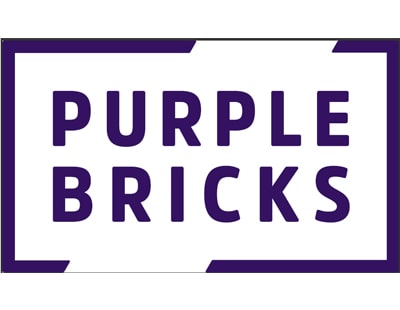Breaking Property News – 11/08/2023
Daily bite-sized proptech and property news in partnership with Proptech-X.
New Purplebricks in desperate need of a purple patch
Typically, when a company fails and its assets are sold off, take for example Purplebricks, there usually follows a period of relative calm whilst the new ‘enterprise’ takes shape. Freed up from controversy and negative headlines the new management team have time to plot out a fresh and winning strategy. Unfortunately, in just a few weeks of the ‘takeover’ for the sum of £1, it seems that Purplebricks is back in the headlines for all the wrong reasons.
No doubt the backers of PB#2 had hoped that the madness of the old regime latterly governed by a naive and inexperienced CEO, who failed to notice her c-suite edging its way out of the door, was at an end. Unfortunately with the imminent ‘letting go’ of a number of personnel from the company, like a bunny in the headlights this onliner is making news for all the wrong reasons.

Whilst there is talk of taking on or retaining some of the troops in a different capacity, making the user UX smoother perhaps, it would seem that the old fashioned bean counting strategy of cutting headcount and a typical 60% of personnel cost to the bone is on the way.
Now in a normal business being mindful of having a low gearing of personnel might work, say you were an online distributor of clothes etc, and could automate human roles.
But as I see it, Purplebricks was always a whippet rather than a thoroughbred racehorse when it came to extra personnel, I think it had less than 30 people who were not direct fee earners – taking vendor cash upfront. If these fee earners are lost, add in the fact that PB#2 has cut fees to buy the market, and less property will be moving due to a huge economic slowdown and you have a real fiscal problem.
In Modern real estate – is Artificial Intelligence – friend or foe?
Just today I have read a number of articles, posts and views on Artificial intelligence, with people at polar extremes of the spectrum, seeing it as a helper or a destroyer of industry jobs and all that humans hold dear.
What is certain is that AI has come a long way from its origins 68-years ago, and whilst it is an ever-increasing arena, in essence the replication of the neural pathways of the human mind in machines sums up the tsuanami of digital and technological change we ae swimming in, barely keeping ourselves above the water. And it is the application of this concept which underpins much of the technology of today. Some pundits makes the point that in partnership AI and humans have a great result, but I am going down the other path, AI will soon leave humans behind, a bit sci-fi? let me explain.
Simply put, Artificial intelligence is built upon mathematics, statistics, probability, information engineering, hooked up with applications to then perform processes. So, back in the early 1990’s being an avid chess player I bought a Kasporov chess computer game, it was then cutting edge. I played against ‘Gary K’ most days and worked my way through the levels, much like AI and machine learning, where computers through processed data become smarter. Then came the day that at the top level I could beat the computer.
Here then is the kicker, the advance of computers capacity, the little brain in my computer game, increases in a non-linear fashion, doubling annually. Aided by advances and the cost of tech coming down in real terms. In the 1960’s IBM computers sent us to the moon, the IBM computer of 2020 capacity wise is many thousand times more capable. So, though the human touch, is presently considered to be essential in for example estate agency a ‘contact people sport’ where maybe the letting agent is helping tenants with their rental maintenance woes. It may not always be the case.
Bricks & Logic – winners and losers in property since economic turmoil of Sept 2022?
Michael Joyne, Chief Data Scientist at Bricks&Logic has all the answers to what the housing market has been up to since the election of Liz Truss back in September 2022.
Michael Joyner, ”Prior to the summer of 2022, the UK had enjoyed a robust housing market, with the average home price surging by nearly 20% between May 2020 and August 2022. This growth was fuelled by a number of factors including: Continued record low interest rates making mortgages very affordable, Increased savings as people unable to spend during lockdowns, Stamp duty holiday, Change in working dynamics with an increase in working from home causing a “race for space”
‘On September 23, 2022, the then-Chancellor of the Exchequer, Kwasi Kwarteng, announced a mini budget designed to address the UK’s cost of living crisis. This package included numerous tax cuts and spending increases. Unfortunately, the global markets reacted negatively to the surplus borrowing needed to execute these measures, leading to a rise in the UK’s borrowing costs. This sparked a chain reaction and as mortgage lenders align their interest rates closely to the Treasury bond rates, a steep increase in the average residential mortgage cost followed.
During this period, numerous media outlets predicted a house price crash. In this article, we aim to assess the market’s movements since this event, delving into the performance of various property types and locations to identify those that have fared the best and the worst’.









